TRANSIT SITES
Armenia, 1997–2011

Julian Heynen: Is it true that you only came across the bus stops in Armenia by chance?
Ursula Schulz-Dornburg: Yes, it is. I was on a trip that was actually supposed to take me to all the ancient monasteries and convents in Armenia, from north to south and east to west. Only then, to my complete astonishment, I saw one of these bus stops in the middle of nowhere. With the woman waiting there it looked exactly like a Visconti movie. This has become my most reproduced motif. The strange, oversized canopy echoes the traditional shape of the roofs on Armenian churches. In the Soviet era it wasn’t possible to build any new churches. So maybe this shape was something of an ironic response to Soviet restrictions.
JH: You were in Armenia during the dramatic period of transition after the dissolution of the Soviet Union. Although they were still in use, the design of those bus stops was already turning into a symbol of the past. Some of these structures look positively surreal to us, but they were of course expressions of a utopian socialism: modernity in no-man’s land. So, in these pictures, what is the relationship of the people to these places ? Did you talk to them? Did you find out anything more about them?
USD: It was mostly women standing at the bus stops, and of course I asked permission to photograph them. They actually seemed happy that someone had noticed them. Afterwards we always offered them a lift home in our car. They often invited us in to drink tea with them. So I heard all sorts of stories about their lives. In the years after the great earthquake and the war with Azerbaijan there was widespread poverty and many Armenians became very creative, although some found it impossible to adapt to the situation. The fabric of the bus stops was often in a terrible state, but the women demonstrated their own ‘construction’ skills in the way they dressed. Even if they lived in completely run-down villages, they still looked as though they were going to the opera. It seemed to me that it must have been the women who sustained life there.
‘The Verticals of Time’: excerpts from conversations between Ursula Schulz-Dornburg and Julian Heynen in December 2017 and January 2018.
Architecture of Waiting [German]
Museum Ludwig, 2006, Köln
Irgendwo in weiter Landschaft stehen sie in erhabener Strenge als Eisengerüste mit lächerlichen Ornamenten oder in grauem Beton da: Haltestellen in Armenien. Weder Pavillon noch Kiosk, weder Bunker noch Tankstelle scheinen diese merkwürdigen Gebäude den Menschen Schutz zu versprechen, aber diese sind ihnen schutzlos ausgeliefert. Die Anwesenheit der Menschen ist zeitlich bedingt, denn sie warten in grotesker Einsamkeit auf einen Bus, der die Erlösung bringt. Diese Unorte der Architektur hat Ursula Schulz-Dornburg in den Jahren von 1997–2001 fotografiert. Es entstand eine Serie von Fotografien, die groteske Architekturen zeigen, aber auch Pathosformeln des einst real existierenden Sozialismus beschwören.
Press release
Architecture of Waiting
Dr. J. Thorn-Prikker, in Goethe-Institut, Bonn, 2006
If you have studied them just the once, then you can no longer get them out of your head. The photo-collection of bizarre bus stops that Düsseldorf-based photographer Ursula Schulz-Dornburg brought back with her from her trips to Armenia in the years between 1997 and 2001 possesses an enigmatic power far exceeding its time and place of origin. The Museum Ludwig in Cologne has now acquired this series.
They are pictures of a rather unusual sad beauty and a comic element which is difficult to categorize. If you were to see one of these bus stops on its own, perhaps you would laugh at it as if you might laugh at a cartoon; taken as a whole, however, they have a certain metaphorical touch of existential loneliness. Schulz-Dornburg has managed – with composed conciseness – to capture on film these bus stops in austere black-and-white photographs. She puts her trust in the meaningfulness of this Architecture of waiting and her photos are left totally to the interpretation of the attentive observer.
All the structures that she captures on film are completely out of proportion. Practicality never plays a role and material is always squandered in abundance. It is as if there had never been any shortage of building materials and no door had been barred to the imaginativeness of those architects who designed them. So as to fill the emptiness with monuments for the waiting strangers, the architects’ work was carried out not with standardized economy versions but with neither expense nor effort being spared.
Between the hope for a departure into the unknown and endless emptiness
Ursula Schulz-Dornburg has found a concise pictorial style for this subject which exploits to the full the whole potential inherent within the theme of waiting. Every mood between calm, the hope for a departure into the unknown and endless emptiness is to be found. There are umbrellas made of reinforced concrete with primitive stools, mushroom-like structures in every variation of arc segment. Others are filigree steel structures engraved like wire drawings in the grey sky. Ornaments in a surrounding of nothingness.
There are impassioned similarities to concrete stars, structures bearing symmetrical projecting side wings as if the departure could not happen quickly enough and far enough away from here. There are skeleton-like structures hinting at the existence of fantastic adjoining rooms and peculiar back rooms.
Some bus stops appear to engulf those waiting like waves made of arched stone. Others are nothing but empty shells merely hinting at the existence of walls and roofs, where the observer is left to guess whether they were never completed or are already dilapidated. Token gestures of shelter which offer shelter from nothing.
Far away from any human habitation
Structurally speaking, just about every reference from temple to castle can be found. Every over-sized structure and token gesture of shelter is put to the test. The grandiose variety of forms contradicts the shabby state that the structures are in. Windows have long been shattered or were not even fitted at the outset, walls are covered with graffiti and messages to strangers who have wasted hours of their lives waiting. Place names or a hint at the existence of bus timetables with arrival or departure times generally do not exist.
Palaces of emptiness in the seemingly placeless expanse of a no-man’s-land. It remains a secret how the photographer has succeeded in photographing the bus stops in such a way that they always appear to be far away from any human habitation.
The people in these photographs look as if they were starting out on a journey from a deserted planet to a continent of invisible cities. Their gestures of waiting possess an element of calm unpretentiousness that lies beyond the empty pathos of structural shapes.
This impressive series of photographs by Ursula Schulz-Dornburg is blessed with a graphic power tending towards the metaphorical. All the pictures are documentary finds from reality, yet they appear to be parables of waiting for new eras that have never dawned. Maybe some day we will interpret them as the summarizing closing pictures during an epoch of state socialism?
Jan Thorn-Prikker, Translation: Guy Skuse
Architecture of Waiting
Matthias Bärmann, 2004
Bus Stops in Armenia
I’m waiting, not waiting. I’m there
(Robert Lax)
They belong to those everyday, ordinary things, perhaps attract particular attention from no one who waits here daily and hardly from anyone traveling past. Bus-stops in Armenia, the oldest Christian country in the world, which scarcely anyone can precisely situate any longer. Architectural structures from the 1970s and ‘80s of the last century, the heroic age of Socialist building. They stand alone, and no single one resembles another. Along stretches which connect places whose names are totally unknown to us and difficult to pronounce. Lined up along the road, along the horizon. The horizon opens above and below. This road leads from Goris to Khndsorek.
They stand beside it, on the edge or in between. As the photographs show them, they stand there entirely for themselves and at the same time in a clear and rigorous relationship. The time of day, weather, light, a diffusely scattered light: in black and white, the small architectures of waiting are brought into relationship with the topography of the edge of settlement, with the mountain range in the distance and the road in the foreground, and are thereby intensified, clearly honed in upon themselves. With minimalistic stringency, the photographic intervention draws an arc from the waiting spaces across the expanse of no-man’s land and steppe, all the way to the horizon. In such a way that the pictorial space unfolds from the line of the horizon running through the center of the picture, slightly below it or slightly above. In such a way an interpenetrating correspondence of things is manifested in the picture, an architecture of a different order: a place.
The neurologist Wolf Singer has compared the complex interactive networks of skyscrapers with the highly organized structures and processes of the brain. Can one draw corporeal analogies with respect to the bus-stops? The parameters of the architecture always seem, in any case, to be like those of the body. Function and form, positioning in space, posture and gesture, the relationship between natural and cultural space, inside and outside. Body and architecture do not simply fit into places but elucidate them, interrelate and intensify relationships to places. Both body and architecture have something to do with “building” in the etymological sense of the word, which means “dwelling.” But in any case, and the photographs show this as well: temporarily, for the time being. Time made visible: building time, time of decay, time in the bodies, time of day, waiting time. At the moment of the exposure, time becomes compressed: the time of waiting for the right light, the right constellation, the time of talking with those who wait. In the process of this compression – that is to say, through the waiting itself – photography becomes “constructive.” Photography and time, architecture and time.
Self-assured architectures but anonymous, as though from Old Masters. Concrete with inset mosaics, iron bent into ornaments. Attempts to make something beautiful, something special, a form from the formless. Thereby, the bus-stops recall other archetypes from the architectonic repertory: dolmen, pavilion, power station, bunker, filling station, loading ramp; or things like container, umbrella, seesaw, a wave frozen in its forward curl. Elementary gestures: bulging, interlocking, the penetration of horizontal and vertical elements as in the case of the Suprematists. Covering, enveloping, protecting: the etymological meaning of "waiting” is “protecting,” “guarding.” As previously remarked, temporarily. Openings in the walls, light outside, dark inside. Frames for steppe-sky-rectangles, for the boundless. Views. And the photographs: views of views.
The remains of cemented foundations, islands for the shipwrecked, modest arks of the quotidian which could drift away at any time to nearby Mount Ararat. Sometimes the roof is missing, occasionally almost everything is missing. A roofless iron skeleton through which wind and weather can pass unhindered, offering only a sign, a suggestion of protection. But there, too, someone has taken shelter, with an opened umbrella. Interior spaces out of doors. Yet as demarcations in space, their strength and meaning persist unabatedly. No paths to be seen that lead to this point or that lead away from it. Even the paths that lead to the photographic exposure remain invisible, can only be guessed at. In the moment of the “exposure” – with its English meaning of photographic exposure-time and vulnerability – the overwhelming continuum of “dark” time contracts in a flash. The indicative seeing of photography arises from the darkness.
Many are waiting alone, others together. Even beneath the most ramshackle construction, someone is standing or sitting. How would it be if the bus-stops were not so different from each other, but all the same? Would the postures of those waiting be different? Is it only the case of people making architecture or also the other way around, of architecture making people? Is there a space formed by waiting? There is indeed; it is the space of relationships, a time-space. A condition unencumbered for a short while, temporarily removed from the world of actions. A floating condition of the intermediary. Temporary interruption of circumstances in one of the most fragmented areas of the world.
They are not waiting somewhere or other at the edge of the road, which would probably be just as feasible. Those waiting could also sit down, but most of them – above all the women – are standing. As though with this physical gesture of self-assertion they sought to adapt to the architectural form. Even if sometimes, in relationship to a construction that has already been very weakened by time, this is visibly an exhausted or melancholy standing. The bus-stops, small monuments of perseverance on the edge of things, in no-man’s land. The figures of those waiting, in posture, clothing and expression: signs, erected in the midst of the overwhelming gravity of circumstances – heroic, mundanely comic, in any case human and dignified.
Photography creates an image of this. Like architecture, it does not work on the substance but as process, out of the relationship. A saying above the entrance to the Akbar mosque in the ruins of the Indian city of Fatepur – regarded, after all, as great architecture – reads: “The world is a bridge. Go across it, but do not build your dwelling there.” Precisely that ambiguity is signaled by the Greek word “utopia”: eutopos, the good place, and outopos, no-place.
Matthias Bärmann
Catalogue: URSULA SCHULZ-DORNBURG. ARCHITEKTUREN DES WARTENS. FOTOGRAFIEN.
Aedes, Berlin 2004
Immobilmachung: Fotografien von Ursula Schulz-Dornburg
Gerhard Matzig, 2004
Warteraume werden uns in jenem Maße bedeutsam, in dem uns die Mobilität zu transitorischen Lebewesen umerzieht. Zunehmend sind wir in Bewegung: mit Bus, Bahn oder Flugzeug. Wir sind Pendler, Geschäftsreisende oder Fernliebende. Wir bereisen Städte, Länder oder Kontinente. Eine ungeheure Dynamik ist in die globalistische Gesellschaft gefahren. Doch steht dieser Dynamik auch eine ganz besondere Form der Statik gegenüber, und gerade das Mobile bringt – paradoxerweise – eine ganz besondere Form der Immobilie hervor.
Damit sind jene denkwürdigen Zwischenzeit-Räume gemeint, die wir uns erst errichten müssen, um die wahren Raume bequem durcheilen zu können. Es sind die Orte des Ein-, Aus- und Umsteigens, die des Abreisens, Ankommens oder Wartens: also Bushauschen, Bahnsteige oder Flughafenterminals. Architekturen sind das, die das Verharren in der Bewegung thematisieren. Das neue Warten soll darin als Erleben, ja als Leben selbst inszeniert werden. So entstehen Terminals, die von Supermarkten kaum zu unterscheiden sind. Und Bahnhofe, die sich als Kinos oder Konferenzzentren entpuppen. Das neue Warten dient dem Dasein und der Erfüllung. Das alte Warten diente dem Anderswoseinwollen und der Sehnsucht.
„I’m waiting, not waiting. I’m there.“
Diese Worte stammen von dem amerikanischen Dichter Robert Lax, sie sind der denkwürdigen Berliner Foto-Ausstellung ,,Architekturen des Wartens" – noch bis zum 12.12. in der Galerie Aedes zu sehen – sowie dem gleichnamigen Büchlein vorangestellt (Ursula Schulz-Dornburg: Architekturen des Wartens. Fotografien. Aedes, Berlin 2004. 40 Seiten, 10 Euro). Zu sehen sind darin die großartigen, gespenstisch innerlichen und zugleich sich wie auf einer Bühne expressiv darbietenden Bushaltestellen oder Bahnhöfe, die Ursula Schulz-Dornburg in Armenien und Saudi-Arabien fotografiert hat. Die Bushaltestellen, „Monumente des Durchhaltens am Rand, im Niemandsland“ (Matthias Bärmann), stammen aus den siebziger- oder achtziger Jahren des vergangenen Jahrhunderts, sie säumen die Strecken von Erevan bis Armavir (unser Bild) oder von Hoktemberian bis Baghramian. Und die Bahnstationen reihen sich entlang der ehemals 1300 Kilometer langen „Hejaz Bahn“, die vor einhundert Jahren Damaskus mit Medina verbunden hat. Beduinenstamme, unterstutzt von T. E Lawrence, dem „Lawrence von Arabien“, zerstörten die Bahnlinie 1917. Übrig geblieben sind nur die einsamen, scheinbar nutzlosen Bahnhöfe.
Wie selbstgenügsame Inseln im Fluss der Zeit wirken die Warteraume in Armenien und Saudi-Arabien: stoisch, gelassen, unheimlich – wartend. Ihren seltenen Bewohnern auf Zeit geben sie kaum Schutz, wohl aber etwas Kraftvolles, etwas Ungerührtes, etwas durch und durch Unbewegtes. Das ist das eigentlich Schone an diesen Bildern und Orten: Das Warten ist darin etwas, das der Ewigkeit mehr zu gehören scheint als der Beweglichkeit.
Gerhard Matzig
Suddeutsche Zeitung Nr.278. 30. November 2004
Architecture of Waiting
Siegfried Löffler, 2004
Mit dem Eintreffen des jüngsten Buches oder neuesten Kataloges eines Fotografen, gar eines sogenannten Architekturfotografen sind in der Regel keine besonderen Erwartungen verbunden, da die meisten dieser Druckwerke trotz einer nicht selten opulenten Aufmachung kaum Appetit erzeugen, weder den Wissensdurst zu stillen, nach einen Augenschmaus zu bieten vermögen. Oft unentschieden zwischen Stilisierung und Stillosigkeit schwankend, bedienen sie zwar stets allerlei Formen des Zeitgeistes, entbehren aber zugleich jener Ingredienzien, die zum Schmecken und Entdecken einladen, einem letztlich also Kunstgenuß oder Erkenntnisgewinn verheißen.
Und dennoch gab und gibt es immer wieder Überraschungen, bedarf es manchmal nur eines schmalen Bandes, um seine Meinung ein klein wenig korrigieren zu müssen. "Architekturen des Wartens" ist nun ein solcher Fall, was sich bereits an der Wahl des Themas zeigt Haltestellen in Armenien und Bahnhöfe in Saudi-Arabien. Abseits üblicher Stadthausvisualisierungen und der heute so beliebten Nachtaufnahmen von mehr oder minder glänzenden Fassaden, die eher an Strickmuster oder Sturmwellen denken lassen, als Gestalt oder Konstruktion des Gebäudes zu erhellen, veranschaulichen die Bilder von Ursula Schulz-Dornburg folglich das Wesen wie die Vergänglichkeit von Bauten, deren Struktur zunächst ebenso unspektakulär erscheint wie ihr Kontext. Bei etwas genauerer Betrachtung entfalten sie jedoch einen ganz speziellen Reiz, offenbaren sich ihre Qualität wie Originalität und verraten derart nicht wenig von den technischen und politischen Veränderungen, die ihr Aussehen wie das leben der sie aufsuchenden Menschen geprägt haben. Die Stationen der Hejaz-Railway beispielsweise, auf der seit gut 90 Jahren kein Zug mehr verkehrt, wurden 1907 von dem deutschen Ingenieur Heinrich Meissner errichtet und sind inzwischen fast zur Gänze "entkernt", während die ohnehin ziemlich "flüchtigen" Busstops schon seit jeher zwischen Straße und Horizont, Siedlungsrand und Gebirge, Steppe und völligem Nichts liegen und die Spuren ihrer Benutzung daher geradezu exemplarisch vorführen. Und so reflektieren beide "Motive" schweigsame, auf die entscheidenden Elemente reduzierte Situationen, die sich aus einem inneren Raum der Leere und Ruhe entwickeln. Die Bereitschaft zur langsamen, sorgfältigen und nicht zuletzt vorurteilsfreien Annäherung bleibt hier indessen unabdingbar, will man das Außergewöhnliche dieser Orte erspüren. — Und das ist unbedingt empfehlenswert.
Siegfried Löffler
[Umrisse] Zeitschrift für Baukultur 5/6, 2004
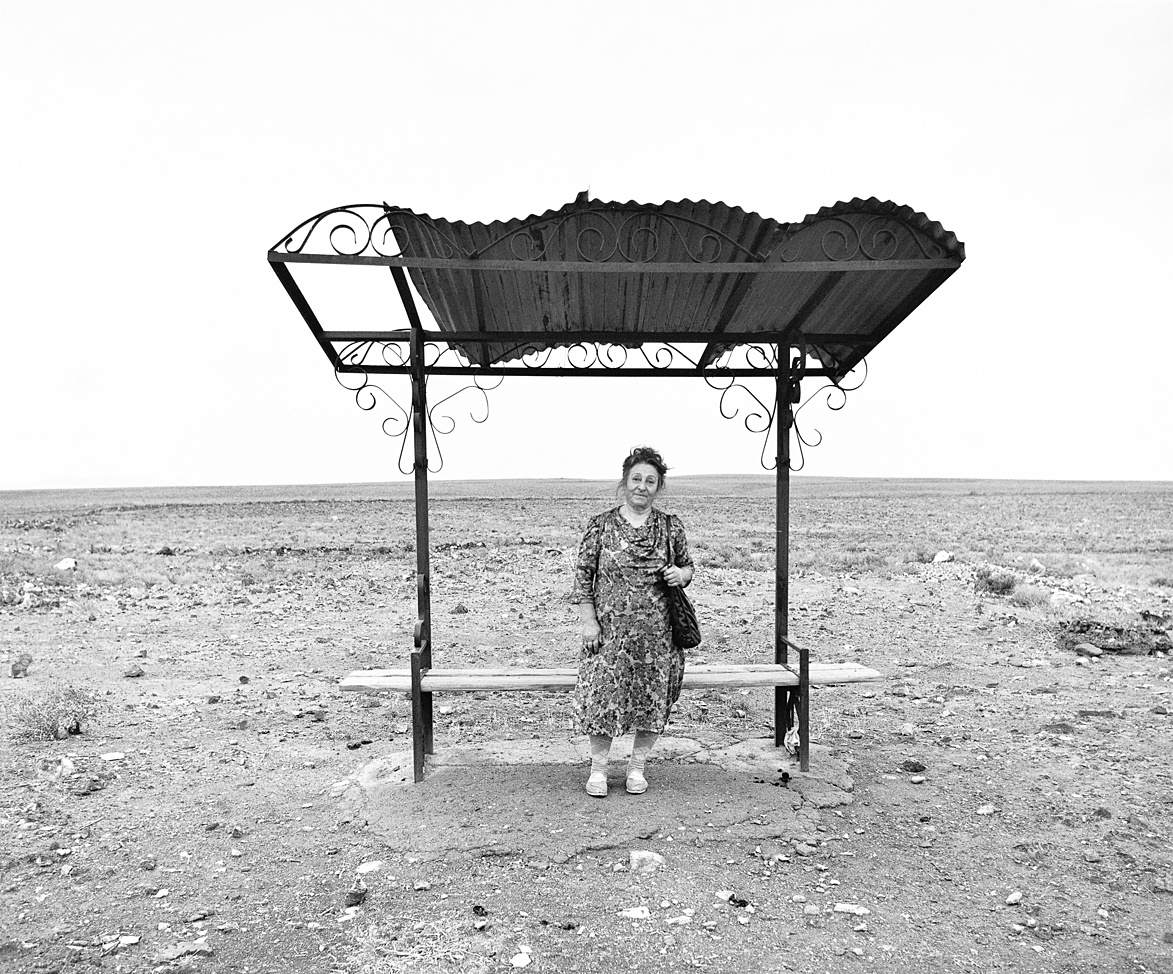
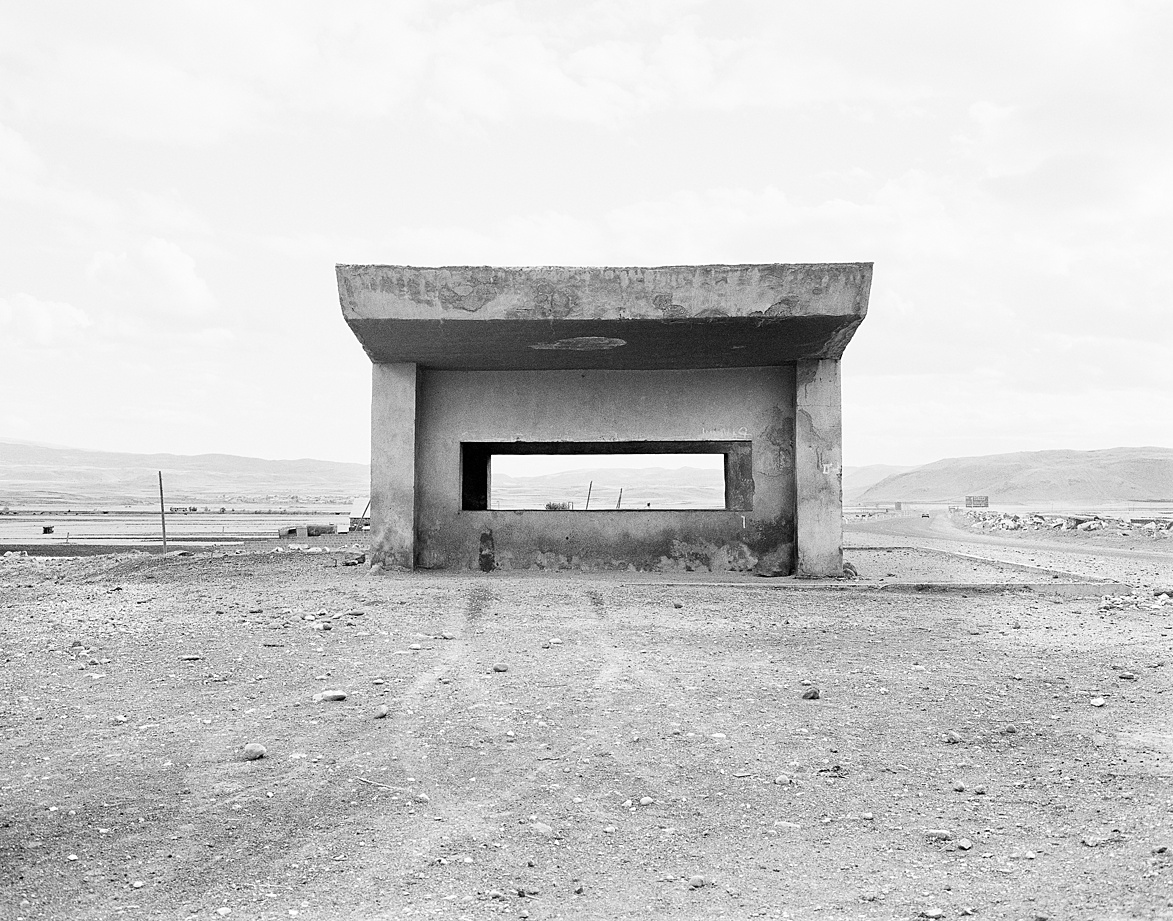
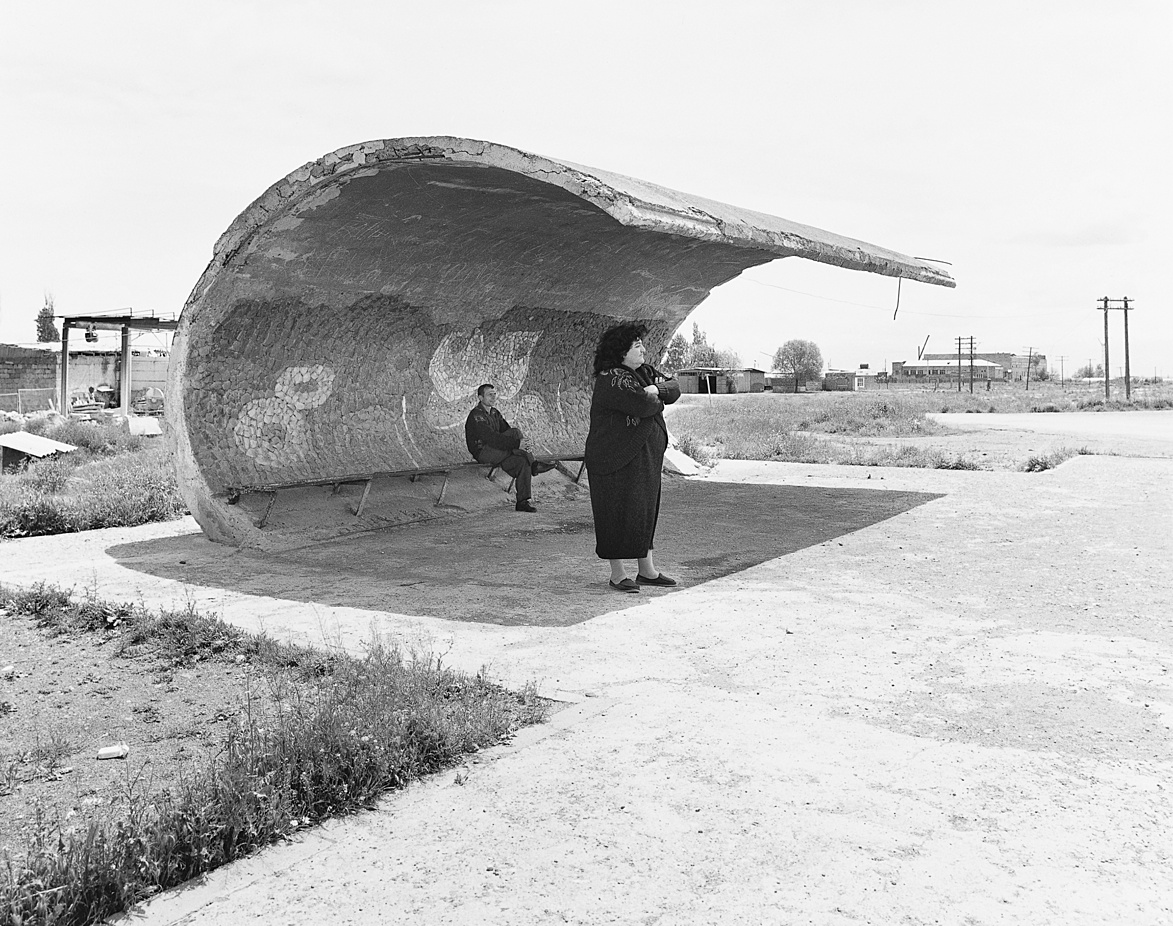



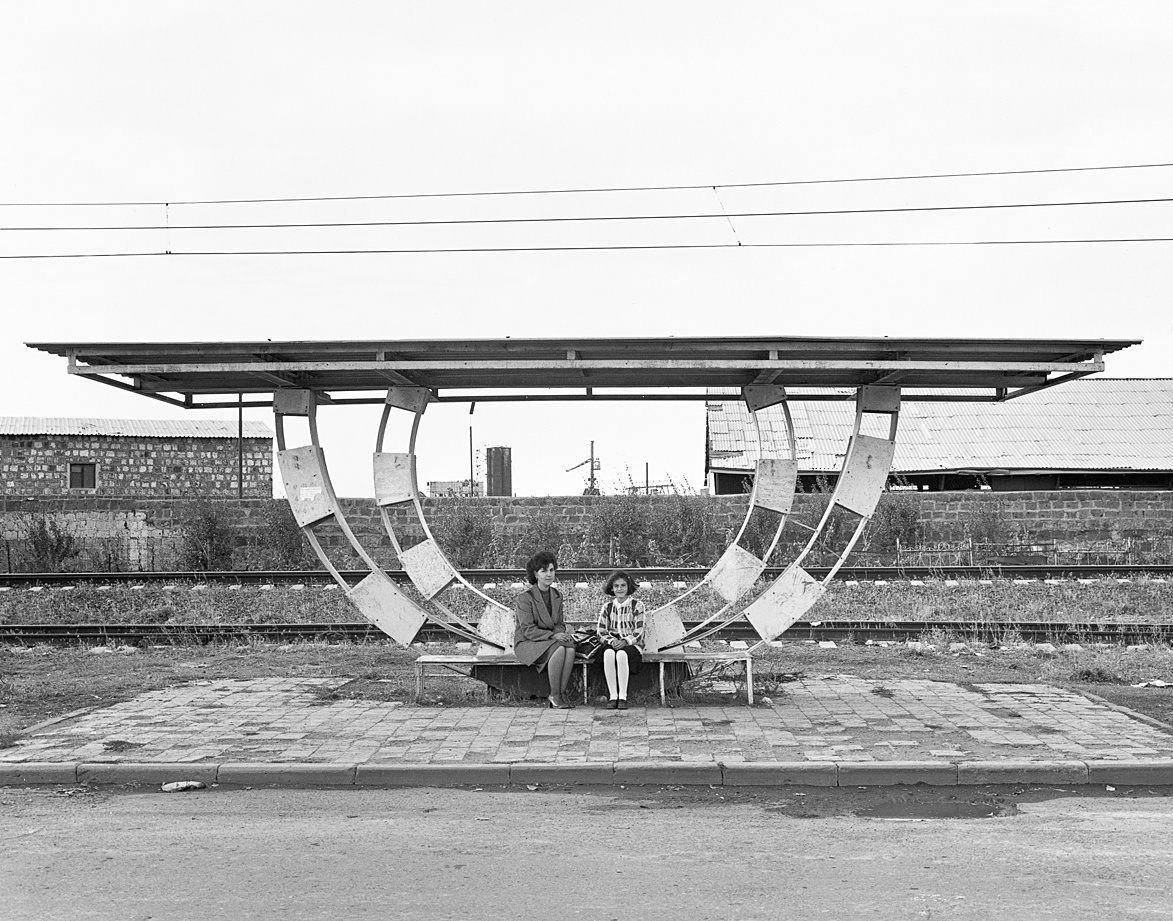




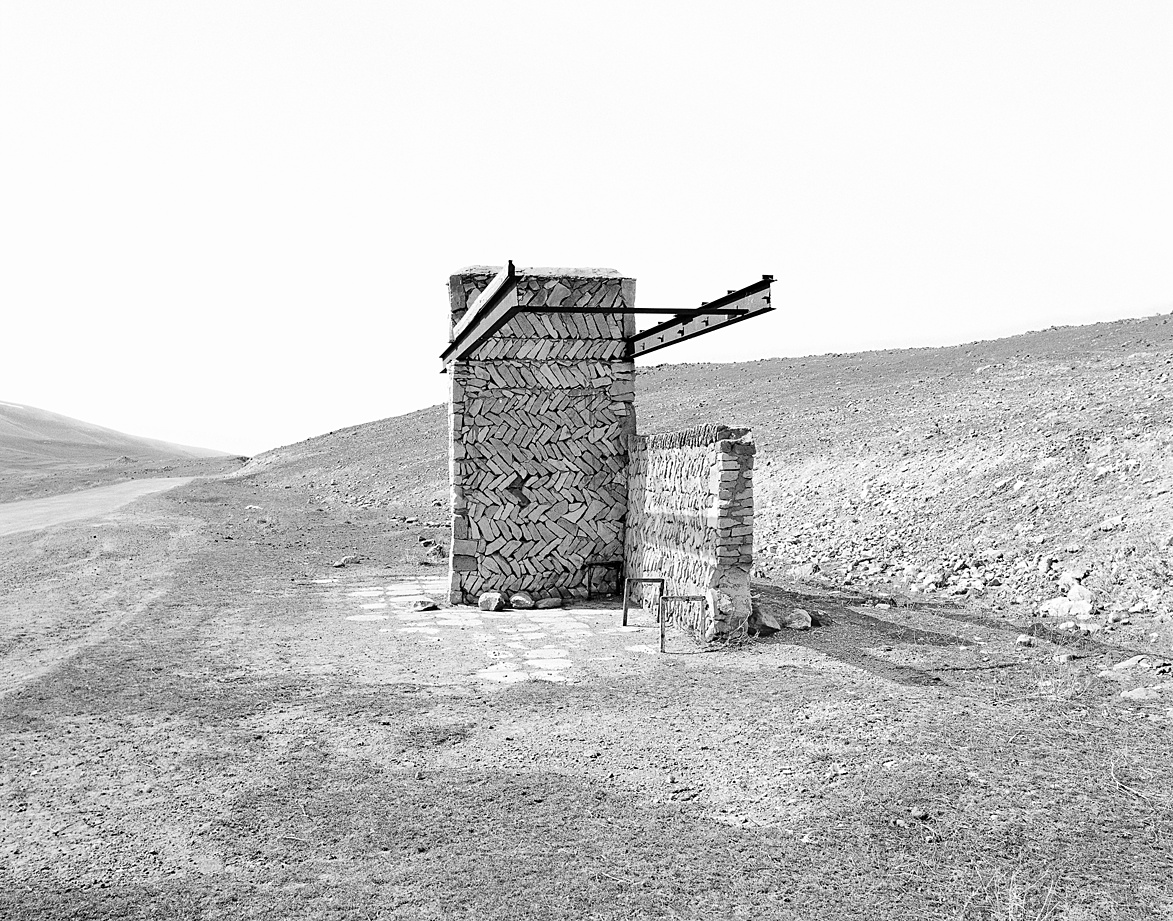


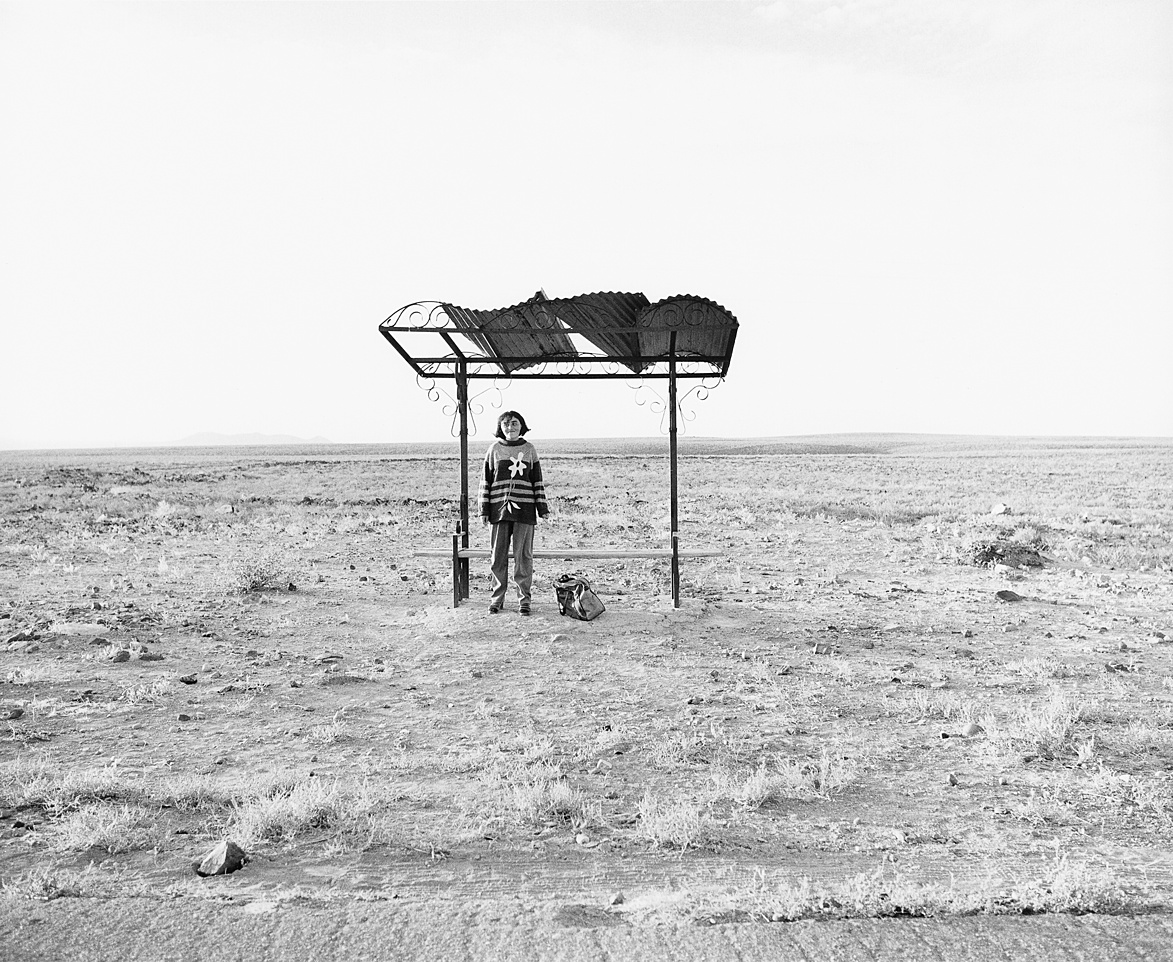

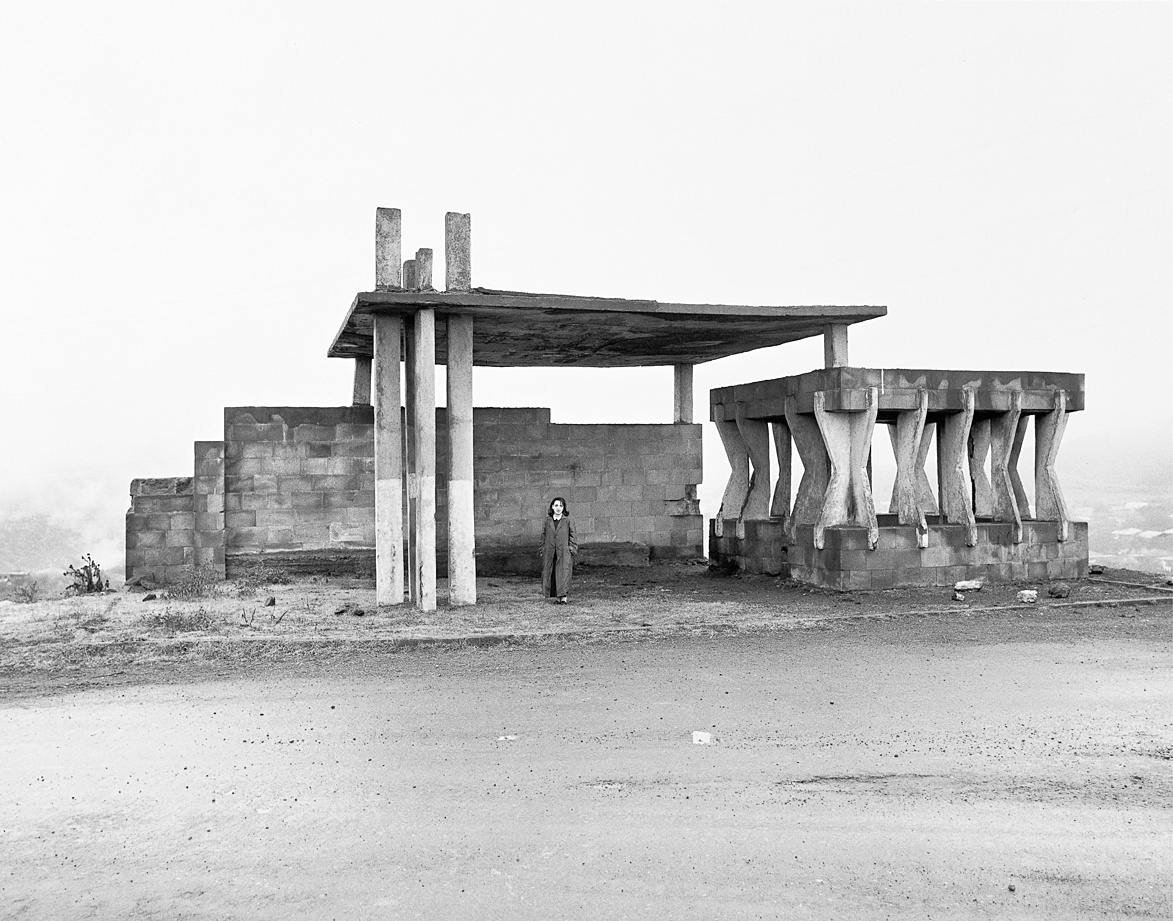
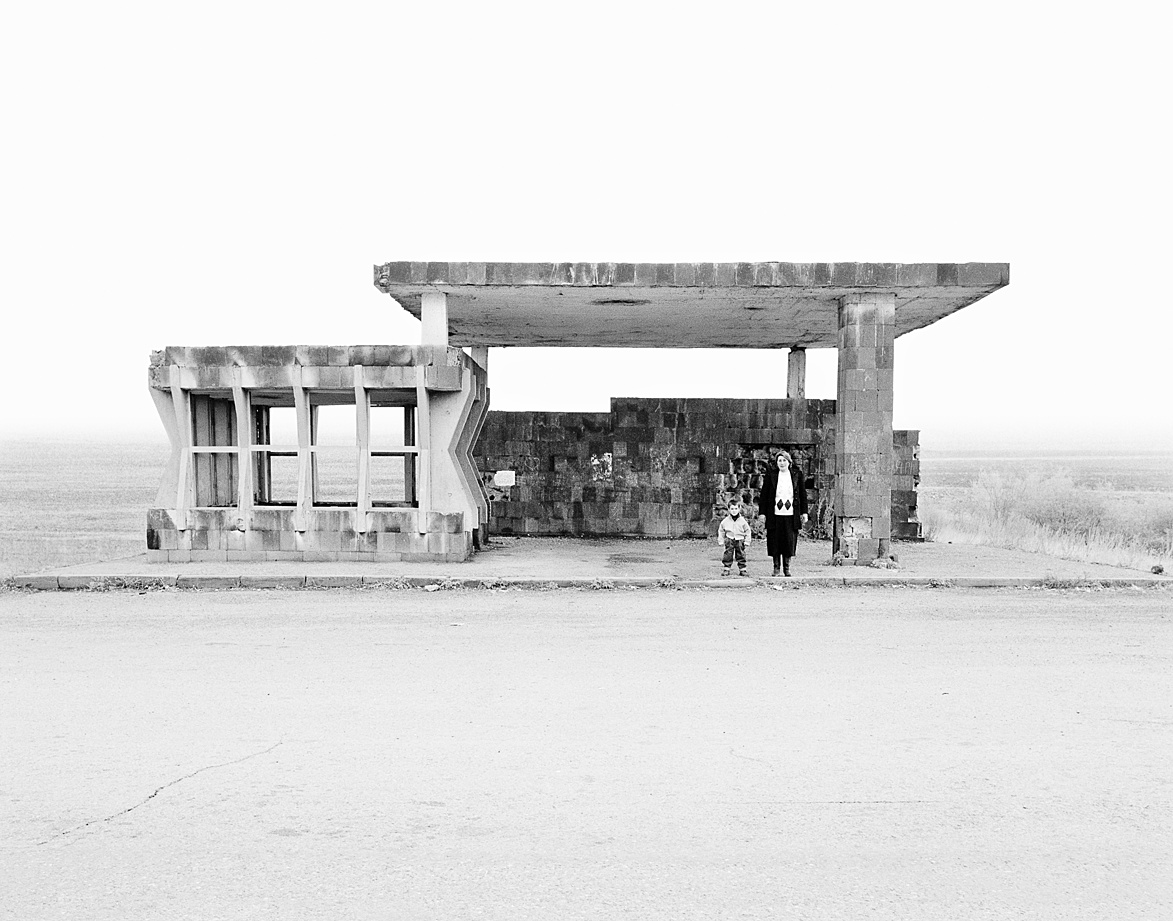




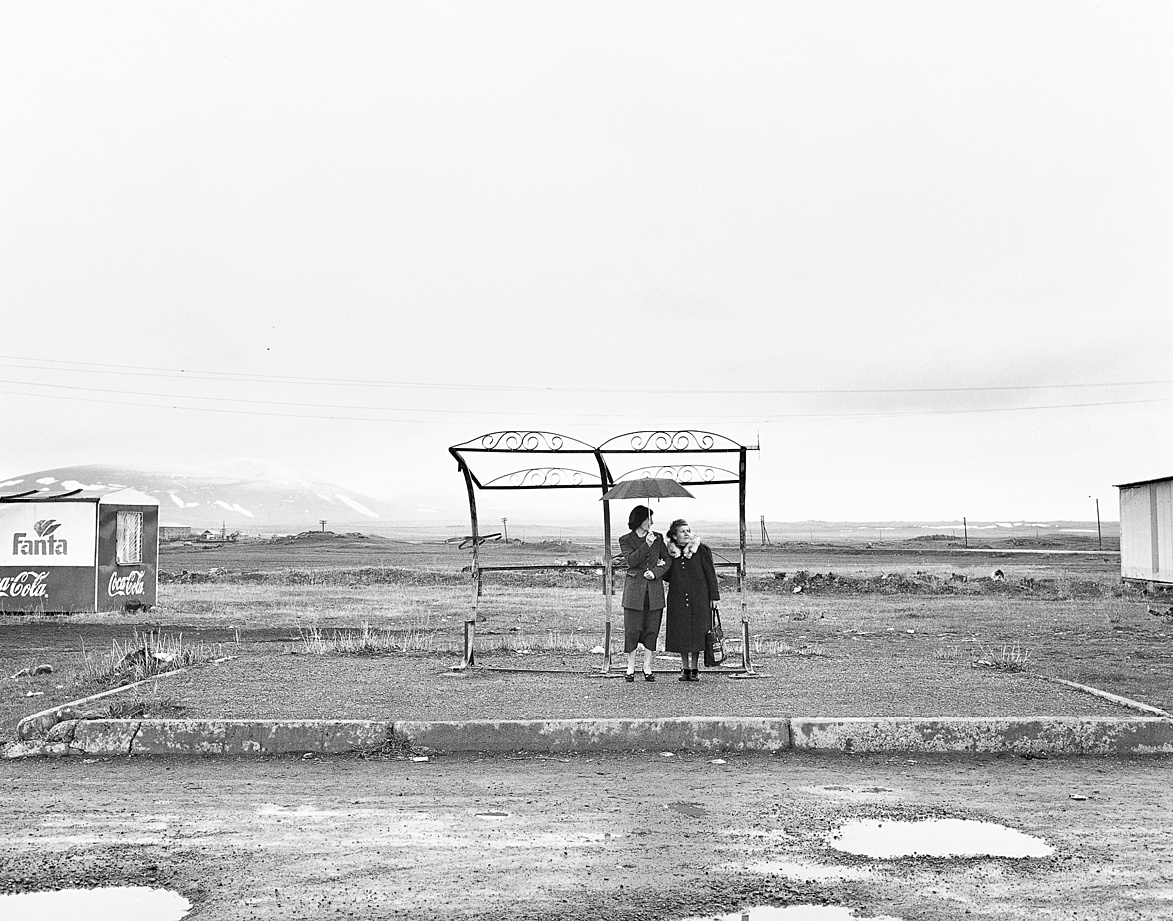

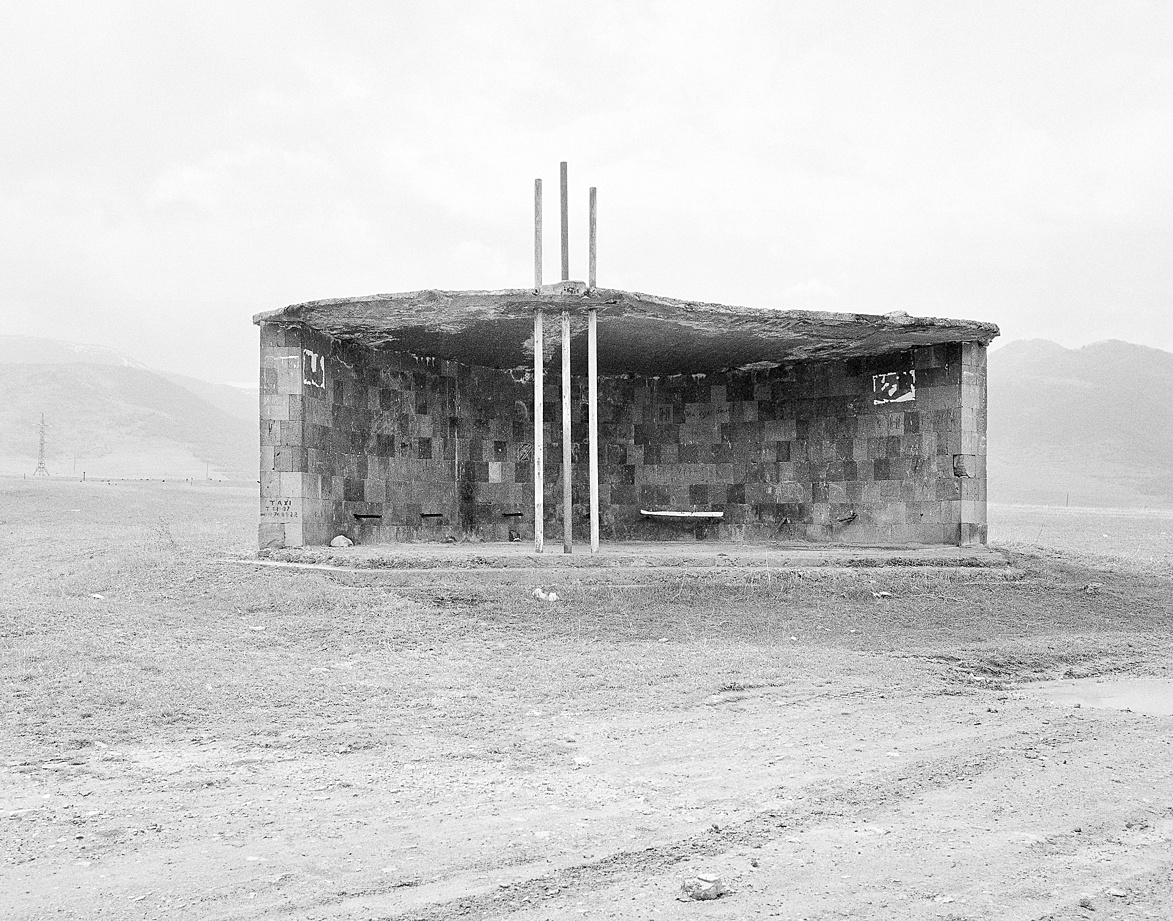
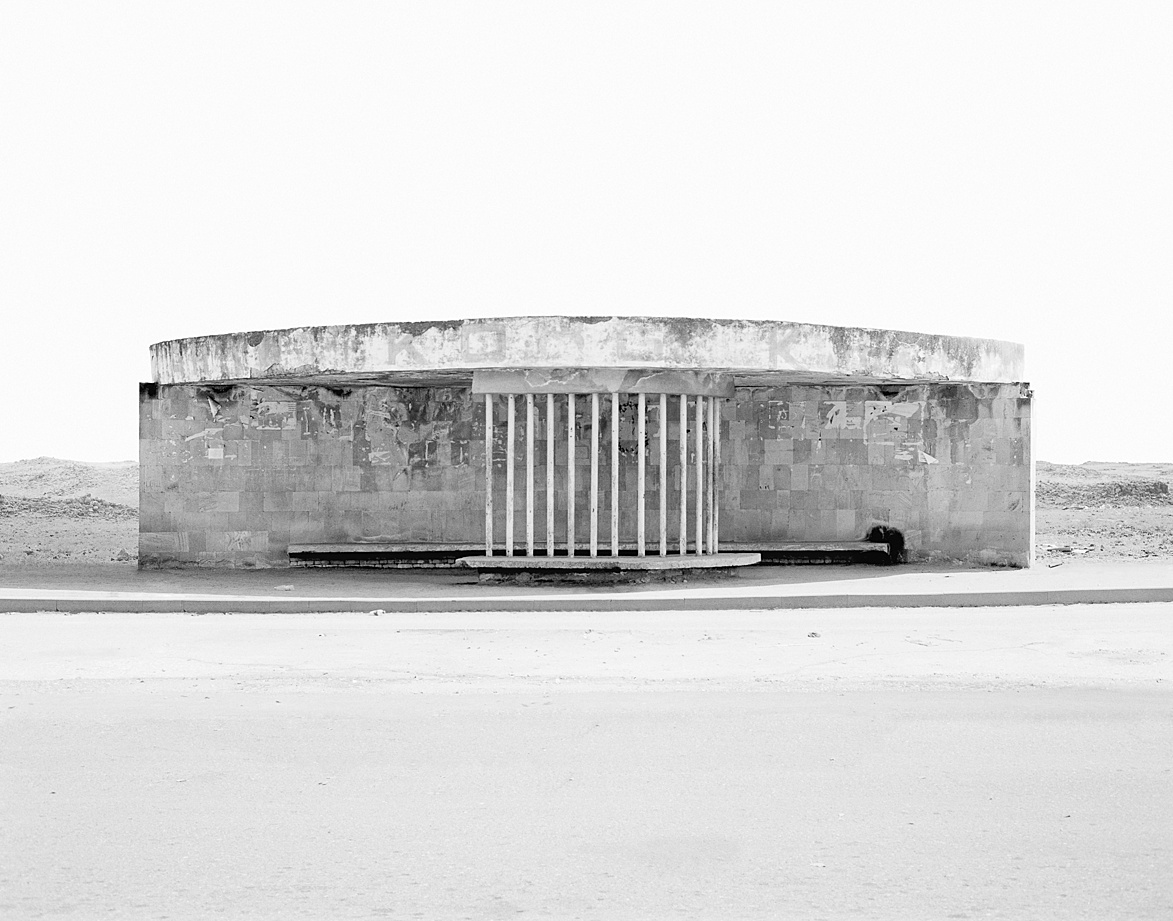
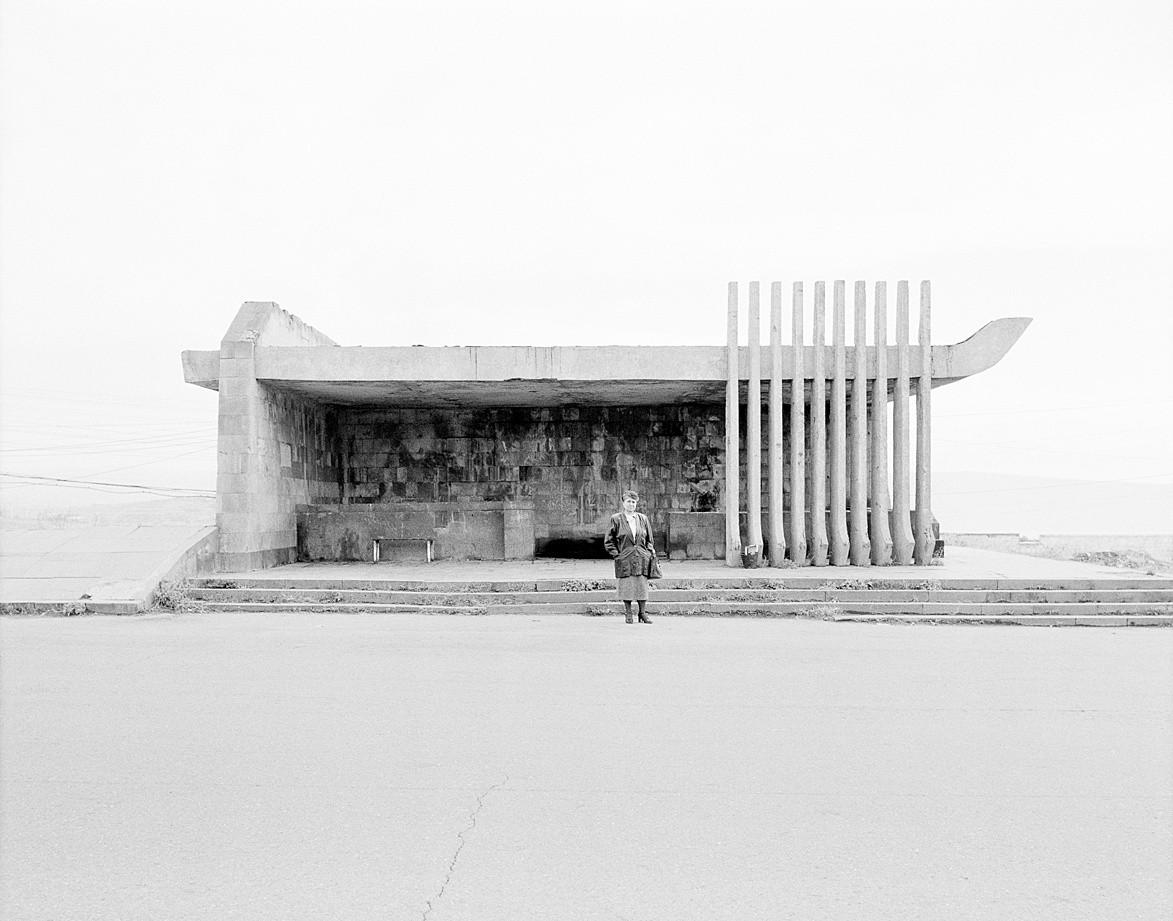




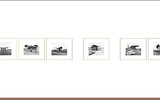


 PDF Download (793.48 KB)
PDF Download (793.48 KB)
